- Clone
- G8.8 (See other available formats)
- Regulatory Status
- RUO
- Other Names
- CD326, EGP40, MIC18, TROP1, KSA
- Isotype
- Rat IgG2a, κ
- Ave. Rating
- Submit a Review
- Product Citations
- publications
EpCAM (CD326) mediates calcium-independent homophilic cell to cell adhesion. It may also function as a growth factor receptor. It is thought to be involved in maintaining cells in position during proliferation. Expression of EpCAM seems to correlate inversely with the level of E-cadherin (CD324). EpCAM is considered important in tumor biology.
Product DetailsProduct Details
- Verified Reactivity
- Mouse
- Antibody Type
- Monoclonal
- Host Species
- Rat
- Immunogen
- TE-71 thymic epithelial cell line
- Formulation
- Phosphate-buffered solution, pH 7.2, containing 0.09% sodium azide
- Preparation
- The antibody was purified by affinity chromatography and conjugated with Spark Blue™ 550 under optimal conditions.
- Concentration
- 0.2 mg/mL
- Storage & Handling
- The antibody solution should be stored undiluted between 2°C and 8°C, and protected from prolonged exposure to light. Do not freeze.
- Application
-
FC
- Recommended Usage
-
Flexi-Fluors™ are provided at a standard 0.2 mg/mL concentration. We recommend titrating this reagent to determine the optimal concentration for each application. For many flow cytometry applications, conjugated antibodies perform well at concentrations ranging from 0.03 to 1.0 µg per million cells in 100 µL. We recommend testing a range of concentrations starting from 10 µg/mL.
For example, make five 1:1 serial dilutions of the 0.2 mg/mL antibody. Add 5 µL of each dilution (including the undiluted antibody) to 100 µL of cells (at 107 cells/mL) to test six concentrations -- 1.0, 0.5, 0.25, 0.125, 0.06, and 0.03 µg per million cells in 100 µL volume. Compare staining patterns or create a titration curve using the MFI or staining index to determine the optimal concentration.
* Spark Blue™ 550 has a maximum excitation of 516 nm and a maximum emission of 540 nm. - Excitation Laser
-
Blue Laser (488 nm)
- Application Notes
-
Additional reported applications for clone G8.8 (for the relevant formats) include: immunohistochemistry of frozen sections: acetone fixed1, with or without OCT embedding2,4, and spatial biology (IBEX)13,14.
- Additional Product Notes
-
For more information about Flexi-Fluors™, visit our Flexi-Fluor™ page and review FAQs associated with this product line.
-
Application References
(PubMed link indicates BioLegend citation) -
- Farr A, et al. 1991. J. Histochem. Cytochem. 39:645. (FC, IHC)
- Dooley J, et al. 2005. J. Immunol. 175:4331. (FC, IHC)
- Hinterberger M, et. al. 2010. Nat. Immunol. 11:512. (FC) PubMed
- Gracz AD, et al. 2010. Am J. Physiol Gastrointest Liver Physiol. 298:590. (IHC) PubMed
- Nudel I, et al. 2011. J. Immunol. 186:891. PubMed
- Morimoto H, et al. 2012. Biol Reprod. 86:148. PubMed
- Ishii K, et al. 2012. Development. 139:1734. PubMed
- Takehashi M, et al. 2012. Biol Reprod. 86:178. PubMed
- Murakami R, et al. 2013. PLoS One. 8:73270. PubMed
- Taguchi K, et al. 2014. Mol Cell Biol. 34:900. PubMed
- Hirokawa Y, et al. 2014. Am J Physiol Gastrointerest Liver Physiol. 306:547. PubMed
- Ding X, et al. 2015. Cancer Res. 75:330. PubMed
- Radtke AJ, et al. 2020. Proc Natl Acad Sci U S A. 117:33455-65. (SB) PubMed
- Radtke AJ, et al. 2022. Nat Protoc. 17:378-401. (SB) PubMed
- RRID
-
AB_3662564 (BioLegend Cat. No. 285260)
Antigen Details
- Structure
- 40 kD single-pass type 1 glycoprotein. 293 amino acids, with a 21 aa signal peptide, a 246 aa extracellular domain, a 21 aa transmembrane domain, and a 26 aa cytoplasmic domain. The extracellular domain contains two epidermal growth factor-like repeats.
- Distribution
-
Expressed on majority of epithelial cell membranes with the exception of adult squamous cells of the skin and a few specific epithelial cell types.
- Function
- Mediates calcium-independent homophilic cell-cell adhesion.
- Interaction
- CD326 displays hemophilic binding.
- Ligand/Receptor
- CD305 (LAIR-1), CD306 (LAIR-2), and Ep-CAM.
- Cell Type
- Embryonic Stem Cells, Epithelial cells
- Biology Area
- Immunology, Stem Cells
- Molecular Family
- Adhesion Molecules, CD Molecules
- Antigen References
-
1. Borkowski TA, et al. 1996. Eur. J. Immunol. 26:110.
2. Bergsagel PL, et al. 1992. J. Immunol. 148:590. - Gene ID
- NA
- UniProt
- View information about CD326 on UniProt.org
Related Pages & Pathways
Pages
Related FAQs
- What are Flexi-Fluors?
-
Flexi-Fluors are rapidly made-to-order conjugated antibodies. The technology, manufacturing processes, and specifications used to create Flexi-Fluors are the same as our regular catalog products. However, the optimal concentration and performance of each Flexi-Fluor must be determined by the customer.
- How quickly will I receive my order?
-
We aim to ship Flexi-Fluors within 2-3 weeks of receipt of your order. However, depending on your location, shipping times may vary.
- How are Flexi-Fluors different from regular catalog products?
-
Flexi-Fluors are made on demand, specifically for you. Flexi-Fluors are manufactured using the same high-quality standards, and specifications as other catalog products. For faster delivery, Flexi-Fluors are not tested by flow cytometry to determine optimal concentrations or evaluate performance. This testing needs to be performed by the customer.
- How do I determine the optimal concentration for using my Flexi-Fluor? How should I titrate my antibody?
-
Flexi-Fluors are provided at a standard 0.2 mg/mL concentration. We recommend that you titrate your antibody to determine the optimal concentration to use for your application. For many flow cytometry applications, conjugated antibodies perform well at concentrations ranging from 0.03 to 1.0 µg per million cells in 100 µL volume. We recommend that you test a range of concentrations starting from 10 µg/mL.
For example, make five 1:1 serial dilutions of your 0.2 mg/mL antibody. Add 5 µL of each dilution (including the undiluted antibody) to 100 µL of cells (at 107 cells/ml) to test six concentrations - 1.0, 0.5, 0.25, 0.125, 0.06, and 0.03 µg per million cells in 100 µL volume. Compare staining patterns or create a titration curve using the MFI or staining index to determine the optimal concentration.
- I can’t find the antibody-dye combination that I need. When will it be available?
-
We continuously update our catalog, introducing scores of new products every month. Please get in touch with our Technical Service team for an update on new products or recommendations for suitable alternatives to complete your panel. Or contact Custom Solutions to inquire about our affordable custom conjugation services.
- I need help to validate the performance of my Flexi-Fluor. Who should I contact?
-
Please get in touch with Technical Service for assistance.
- Can I order more than 50 μg of a Flexi-Fluor?
-
Yes, you can order multiple vials of the same Flexi-Fluor products. We cannot guarantee, however, that these vials will be bottled from the same lot. For bulk single-lot orders, contact our Custom Solutions team.
- What is the expiration date of my Flexi-Fluor?
-
Expiration dates can be found on the vial label or by using our CoA lookup tool.
Other Formats
View All CD326 Reagents Request Custom ConjugationCompare Data Across All Formats
This data display is provided for general comparisons between formats.
Your actual data may vary due to variations in samples, target cells, instruments and their settings, staining conditions, and other factors.
If you need assistance with selecting the best format contact our expert technical support team.
-
APC anti-mouse CD326 (Ep-CAM)
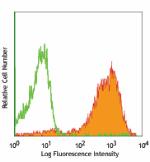
TE-71 (mouse thymic epithelial stromal cell line) stained wi... -
Purified anti-mouse CD326 (Ep-CAM)
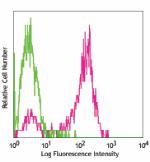
TE-71 cell line stained with G8.8 purified, followed by anti... -
Biotin anti-mouse CD326 (Ep-CAM)
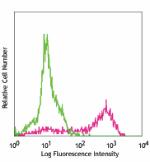
Mouse thymic epithelial stromal cell line TE-71 stained with... -
PE anti-mouse CD326 (Ep-CAM)
_Antibody_1_FC_100416.jpg&Width=150&altFmImage_path=&Crop=5)
TE-71 (mouse thymic epithelial stromal cell line) cells were... -
FITC anti-mouse CD326 (Ep-CAM)
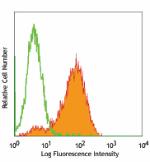
TE-71 (mouse thymic epithelial stromal cell line) stained wi... -
Alexa Fluor® 488 anti-mouse CD326 (Ep-CAM)
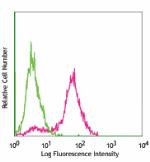
TE-71, mouse thymic epithelial stromal cell line, stained wi... 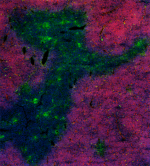
C57BL/6 mouse frozen thymus section was fixed with 4% parafo... 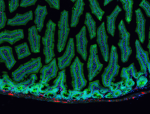
Dissected C57/B6 mouse stomach was immersed in 4% paraforma... 
Paraformaldehyde-fixed (4%), 500 μm-thick mouse lung section... -
Alexa Fluor® 647 anti-mouse CD326 (Ep-CAM)
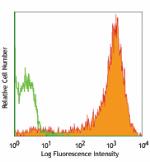
TE-71 (mouse thymic epithelial stromal cell line) stained wi... 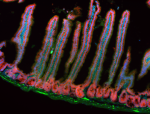
Dissected C57/B6 mouse small intestine was immersed in 4% p... 
Paraformaldehyde-fixed (4%), 500 μm-thick mouse thymus tissu... 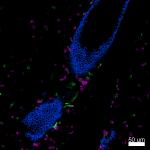
Confocal image of C57BL/6 mouse lung sample acquired using t... -
PE/Cyanine7 anti-mouse CD326 (Ep-CAM)
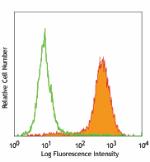
TE-71 (mouse thymic epithelial stromal cell line) stained wi... -
APC/Cyanine7 anti-mouse CD326 (Ep-CAM)
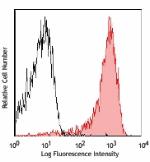
Mouse thymic epithelial stromal cell line TE-71 stained with... -
PerCP/Cyanine5.5 anti-mouse CD326 (Ep-CAM)
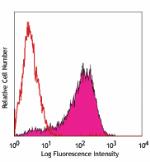
Mouse thymic epithelial stromal cell line (TE-71) stained wi... -
Alexa Fluor® 594 anti-mouse CD326 (Ep-CAM)
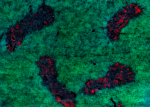
C57BL/6 mouse frozen thymus section was fixed with 4% parafo... 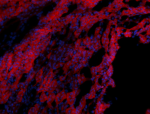
C57BL/6 mouse frozen kidney section was fixed with 4% parafo... 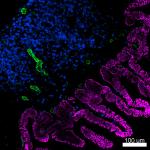
Confocal image of C57BL/6 mouse small intestine sample acqui... 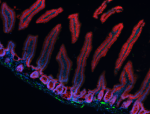
Dissected C57/B6 mouse small intestine was immersed in 4% p... Formalin-fixed, 300 micron-thick mouse large intestine secti... 
Paraformaldehyde-fixed (4%), 500 μm-thick mouse kidney tissu... -
Brilliant Violet 421™ anti-mouse CD326 (Ep-CAM)
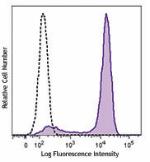
TE-71 (mouse thymic epithelial stromal cell line) was staine... -
Brilliant Violet 605™ anti-mouse CD326 (Ep-CAM)
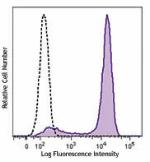
TE-71 (mouse thymic epithelial stromal cell line) was staine... -
Purified anti-mouse CD326 (Ep-CAM) (Maxpar® Ready)
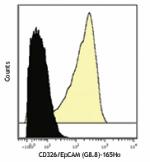
Mouse TE-71 (top) or Chinese Hamster Ovary (CHO) (bottom) ce... -
APC/Fire™ 750 anti-mouse CD326 (Ep-CAM)
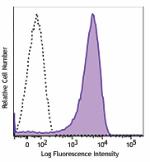
TE-71 (mouse thymic epithelial stromal cell line) cells were... -
Brilliant Violet 711™ anti-mouse CD326 (Ep-CAM)
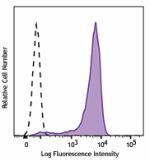
TE-71 (mouse thymic epithelial stromal cell line) cells were... -
Brilliant Violet 510™ anti-mouse CD326 (Ep-CAM)
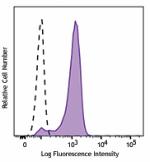
TE-71 (mouse thymic epithelial stromal cell line) cells were... -
PE/Dazzle™ 594 anti-mouse CD326 (Ep-CAM)
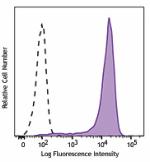
TE-71 (mouse thymic epithelial stromal cell line) cells were... -
TotalSeq™-A0449 anti-mouse CD326 (Ep-CAM)
-
Alexa Fluor® 700 anti-mouse CD326 (Ep-CAM)
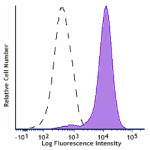
TE-71 (mouse thymic epithelial stromal cell line) was staine... -
TotalSeq™-C0449 anti-mouse CD326 (Ep-CAM)
-
Brilliant Violet 785™ anti-mouse CD326 (Ep-CAM)
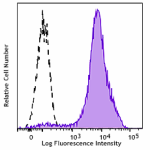
TE-71 (mouse thymic epithelial stromal cell line) was staine... -
TotalSeq™-B0449 anti-mouse CD326 (Ep-CAM)
-
Brilliant Violet 650™ anti-mouse CD326 (Ep-CAM)
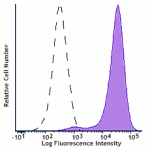
TE-71 (mouse thymic epithelial stromal cell line) was staine... -
PE/Cyanine5 anti-mouse CD326 (Ep-CAM)
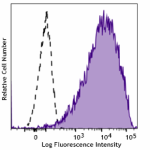
4T1 (a mouse triple negative breast cancer cell line) cells ... -
Spark Red™ 718 anti-mouse CD326 (Ep-CAM) (Flexi-Fluor™)
-
Spark Blue™ 574 anti-mouse CD326 (Ep-CAM) (Flexi-Fluor™)
-
Spark Blue™ 550 anti-mouse CD326 (Ep-CAM) (Flexi-Fluor™)
 Login / Register
Login / Register 










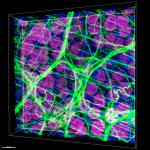



Follow Us